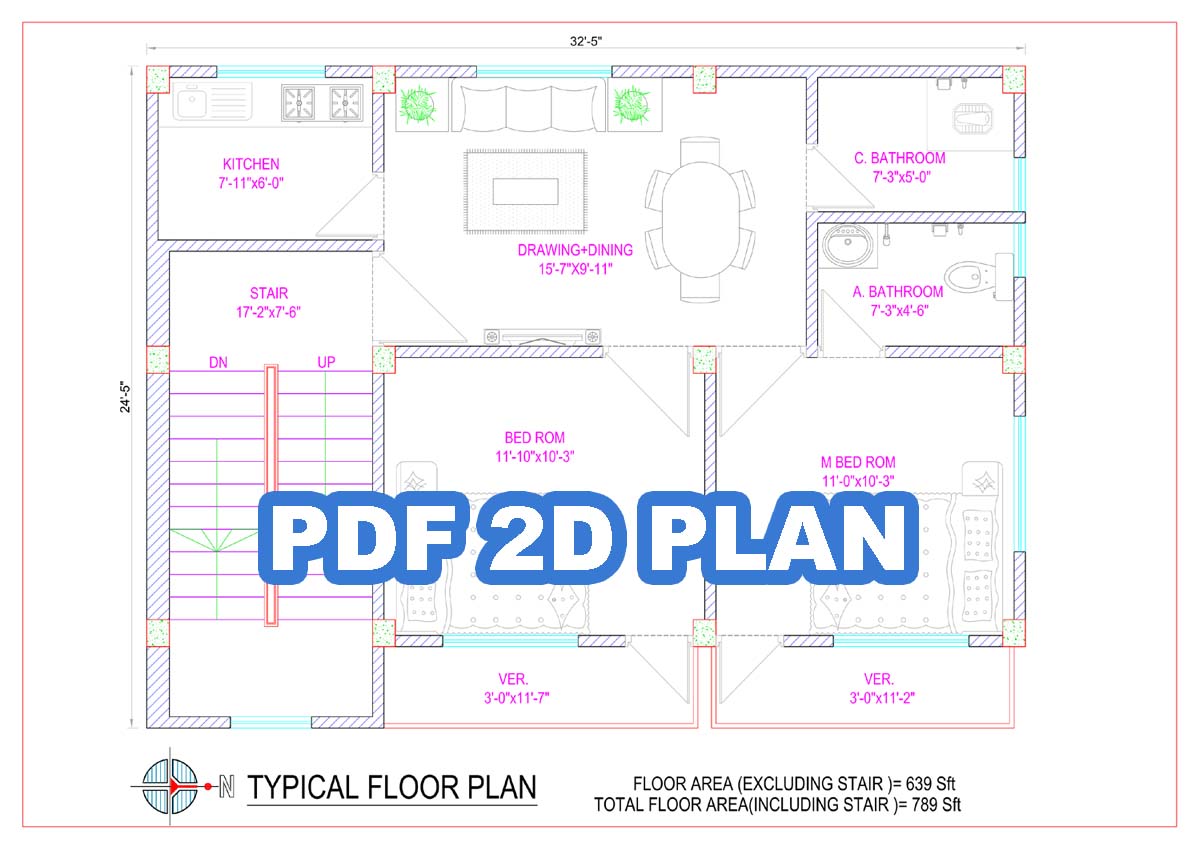

However, some draftspersons slope the tick marks for vertically read dimensions from left to right and horizontally read dimensions from right to left. The 45-degree tick marks are drawn in a consistent direction. The arrows, dots, or tick marks are drawn with a thicker and/or darker line to make them stand out graphically. Arrows, dots, or 45-degree tick marks (most common) are used at the extension line and dimension line junction. It extends about V8 inch (3.17 mm) beyond the dimension line. The extension line begins slightly away from the object (a minimum of Vi6 inch or 1.58 mm), never touching it. Note that the dimension lines are drafted lighter than wall lines and are generally done as a continuous group or string of numbers along a line. The extension lines do not touch the walls, and dark 45-degree tick marks indicate the extent of the dimensions.ĭimensions are placed on the floor plan. Note that the dimensions on this partial floor plan are placed outside of the spaces.

House plan drawing samples with dimensions windows#
The cen-terline technique can also be used to locate exterior windows and doors, as seen in this example. It is dimensioned to the centerline of the wall. However, too few dimensions can produce a lot of guesswork and increase the chances for error in the field and in coordination between subcontractors.Īll dimensions in this floor plan are to the face of a stud, except for the wall between the closets. An overdimensioned plan allows the builder little freedom to make field adjustments or substitute cost-saving techniques. A good guideline for dimensioning falls somewhere between these two approaches. However, if only a few key dimensions are shown, the builder is trusted to determine exact locations of interior components. A very detailed and dimensioned plan gives the builder little room for deviation from the original design. The actual number of dimensions on a plan is dependent upon how much latitude the designer affords the contractor. Buildings, structural framework, rooms, and fixtures are dimensioned in decreasing size order. For example, this part of the plan is referenced as area 6 and enlarged on sheet A4.ĭimensions on a floor plan generally locate the framework of the building, such as the face of these 2x4 studs.ĭimensioning is done in a hierarchical manner. In some cases, however, the centerline of the wall might be located and dimensioned.Ī portion of a floor plan can be keyed with a symbol to a larger, more detailed plan that is drawn elsewhere. This dimensioning technique gives the exact location of the studs, columns, and beams and is generally placed to the face of these. Generally, elements such as walls are dimensioned to the frame, as the builder first erects this and then adds the finishes to it. In fact, most designers add a note on the drawing that says, "do not scale drawing, follow written dimensions." In such cases, the floor plan is slightly out of true scale, but this is acceptable because the written dimensions are the controlling factors. Sometimes after a plan is drawn accurately to a scale, its reproduction causes a slight enlargement or reduction of the drawing. A floor plan is carefully dimensioned to ensure that items such as walls, columns, doors, windows, openings, stairs, and other particulars are correctly located for construction.


 0 kommentar(er)
0 kommentar(er)
